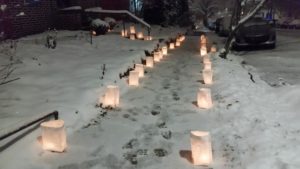Stopping by again…
Mapping: I had, and still have, a few technical issues to deal with, but the full Lehigh Valley database is now in PostGIS, along with elevation data — bogus elevation data, that’s one of my technical issues — and the demo map can now route with the new database. But it’s got the slows, it’s got the slooowws… With about 3200 road segments in the “toy database,” it could route in about 1-2 seconds, but the full-map version took about 6 seconds per routing task — and there may be multiple routing tasks in each route, from start point, to via point and then through subsequent via points, and finally to the endpoint. Unacceptable!
I did some searches online, and sure enough there are a lot of people complaining about pgRouting performance and looking to speed it up. The general consensus: there are a few things you can do, including tune your database, but the actual bottlenecks are the pgRouting algorithms. Some suggested using osm2po, another program that converts OpenStreetMap data for databases but can also do routing: tried it and it’s blindingly fast – d’oh! (Unfortunately, I didn’t see much there in the way of customized, dynamic cost functions, so I can’t see how to turn it into the the answer I’m looking for.) I tried a bunch f the Postgres/PostGIS performance-tuning tips anyway, and they did seem to help a little.
I eventually came across one potential solution: route only on a subset of the roads in the database, using a bounding box. For each pair of points to route between, I find the smallest rectangle that contains both, then expand it by 2000 meters in every direction (like a buffer zone); this is my bounding box, and the routing search is limited to the roads that touch or fall within that box. This seemed to do the trick: my routing times are back down to about 1-2 seconds.
Except near — wait for it — those confounded bridges. The valley is broken up by the Lehigh river, with occasional bridges, and if there are no bridges within the bounding box for a route that needs to cross the river, no route will be found. Meanwhile, when routing points are on a diagonal, the bounding boxes are fairly big, but routing points that run mainly east-west or north-south produce long, skinny bounding boxes. I found a few “dead zones” where routes couldn’t be found, especially east-west ones north of Northampton, routes with skinny bounding boxes where the bridges are a little sparser. My original bounding boxes were expanded by a buffer that was only 1000 meters; I went to 2000 meters in an attempt to alleviate the bridge problem. This didn’t solve it entirely, but it did help, and there was no real performance hit going from 1000 to 2000 meters. I’ll probably look at distances between bridges, and revise my buffer zone to be just bigger than say, half that distance.
Reading: I picked up Don DeLillo’s Underworld again, intending to just read the first part. I love the first chapter but never finished the book because I found the rest boring; now I am engrossed and don’t know what I was thinking back then.
Listening: WXPN has been playing “The 70’s, A-Z” this past week, every song they have in their library that was released in the Seventies, played in alphabetical order. We’ve been following along religiously, and it’s been fascinating and fun but they’re only up to “T,” and it gets wearing. Full disclosure: the radio is off right now…
The only time they weren’t playing the 70’s was for their Friday “Free at Noon” concert at the Word Cafe, which this week featured Russ’s band Cherry. So, we went down to Philly with Ray and Lorraine, where we met Frank and Patricia, and Ben, and Gabby, and we all watched the show and then went out to lunch with Russ at the White Dog Cafe. As always, we spent a few minutes at Penn Books before the ride home. All the talk in Philly, among us and overheard on the street, was about the upcoming snow on Saturday…
By the way, Saturday was Luminaria Night in Bethlehem, here is a photo of ours:

One last thing: here is what I wrote ten years ago.
